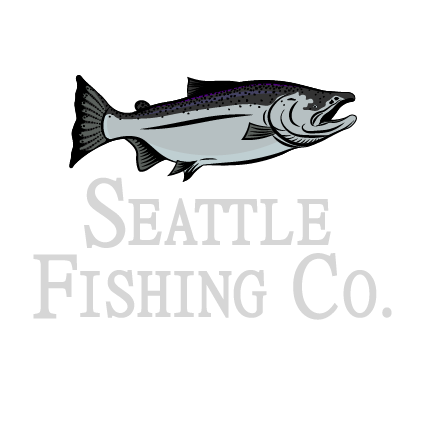How to Catch Lingcod
Lingcod is one of my favorite catch! They live in interesting places, are easy enough to catch and I love to cook them. They thrive in areas of complex structure. Places like reefs, rock piles, ledges, jetties, sea mounts and almost anywhere that has a rock hard bottom structure.
Their aggression is unmatched in the world of the cold water reef. They are a hunter. They are an ambush predator. And although rocky habitat can draw a large concentration of Lingcod, these are not a social fish… they will eat each other for fun. Everything that swims or crawls in their realm is a potential meal. Nothing swimming is safe in the world of the Lingcod. But that aggression is what makes them such a popular fish to catch.
Lingcod Fishing Basics
Lingcod fishing is pretty straight forward: you find the structure and then drift over it with your lure near the bottom where they live. Lingcod love a struggling Sand Dab or Greenling and fishing live bait can be the most effective thing you could fish! You can simplify your day by using artificial lures as well!
There are a few challenges involved in learning how to catch Lingcod. The first challenge is to discover the nearby area with the highest concentration of fish, which has a direct correlation to finding the best structure. Some areas are so rocky and complex that you have to fish around the perimeters during the heaviest tides. Underwater pinnacles and massive rock structures may look amazing on the sonar, but can be real tackle grabbers when the current is ripping. So boat positioning becomes important. I love fishing complex structures, but if I find a small stretch of rocky bottom away from other more impressive structure, I usually find it worth fishing for a while to see what’s down there. And if we start catching a few Lingcod the spot gets permanently marked on my chart.
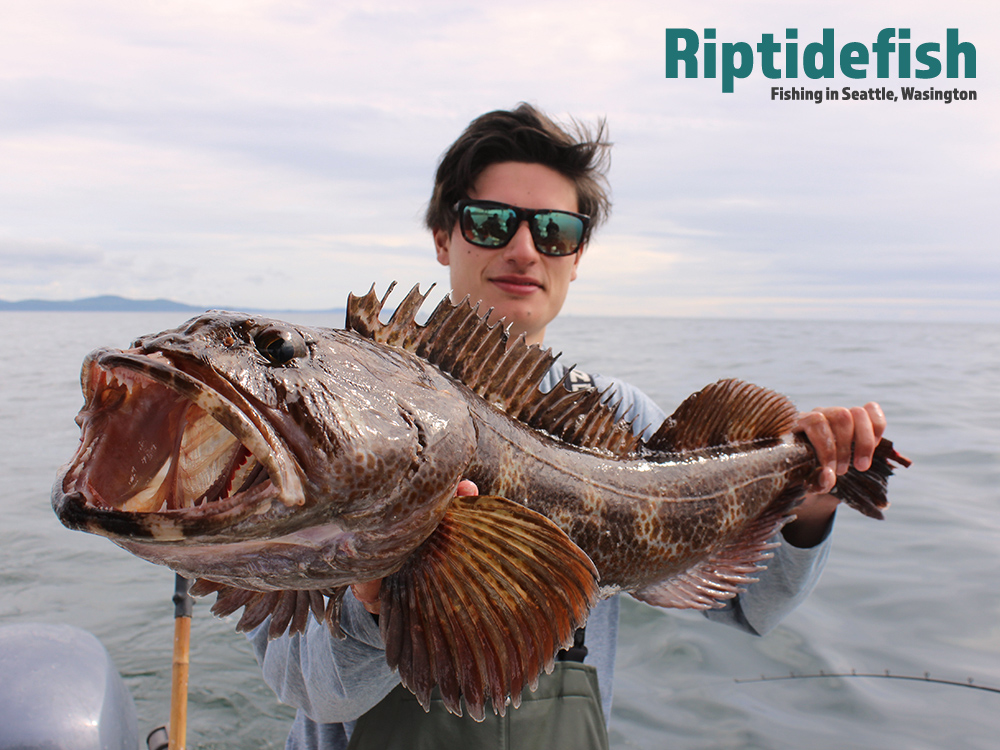
Best Places to Catch Lingcod
Lingcod live in areas that are rocky. And they love areas that have heavy currents. A Lingcod’s preferred hiding spot would be in a dark and rocky lair that offers camouflage and enough current in the front yard to flush by lots of fresh prey. Lingcod do not have swim bladders to regulate their depth. It takes them effort to swim around, and they are a pretty lazy fish in general that will rest with their belly laying on the bottom.
A happy young Rockfish is swimming along the reef, feeding and carrying on, then in a split second those quiet shadows underneath a nearby ledge erupt with a rushing large mouth and a flash of razor-sharp teeth that engulfs the poor young Rockfish! Kind of a sad image, but the Lingcod is a vicious hunter, already thinking about finding its next meal!
Lingcod Fishing the Pacific Inshore
There are regions where the coastline is nothing but Lingcod habitat and an endless number of places to fish. The craggy shoreline near Neah Bay, Washington is one of these places. Lingcod live everywhere, and finding a fishing spot is as easy at looking at a chart or looking a little further down the coast.
Areas near Westport, Washington are the exact opposite. The nearly flat and gradual bottom offers few hints on a chart of where to fish (except for a few places far to the north). But it’s all relative, so an area that is hard rock bottom, even if it is fairly flat, will be the place to find the highest concentration in the area.
Puget Sound is an interesting place to fish for Lingcod. Although there are a few obvious places on a map that have good Lingcod structure, these areas get heavy traffic from fishermen and get fished out early. The best fishermen that I know have built a portfolio of small-structure-places. The biggest Lingcod I have seen caught in Puget Sound was off a rock in 60 feet of water, the size of a refrigerator that we stumbled upon in an area I’ve never heard of before. I love being generous with my fishing knowledge, but these are the secret spots I keep guarded.
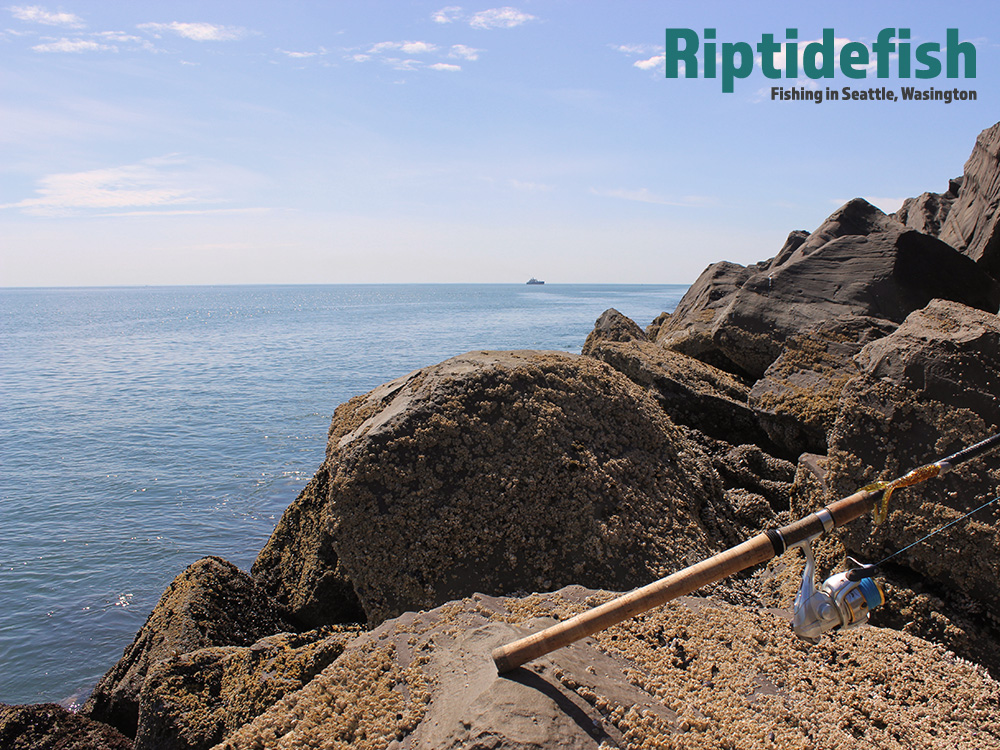
How to Catch Lingcod
Check out the best methods for catching Lingcod here. I also made a list of My Favorite Lingcod Lures of All Time… check it out too!
Jigging for Lingcod
A strong vertical movement of your lure will trigger a Lingcod’s attention. There were days on the ocean where the swell alone was lifting the jigs 10 feet or more, and Lingcod were eating them well off the bottom. I have my favorites, depending on where I am fishing.
Favorite Deep Sea Lingcod Jigs
Some of the best Lingcod fishing is found far offshore, at the edge of the continental shelf. Every Washington Coast port has a number of great offshore spots, 20 to 40 miles from port, where Lingcod and Halibut are abundant. They just so happen to be 250′ to 500′ down, so heavy gear is a big must.
Jigging Lingcod with Pipe Jigs
Copper Pipe Jigs are one of the oddest looking lures in the tackle box, but it continues to amaze me how well these work for Lingcod (Halibut as well). The electrolysis radiates from this lead filled copper pipe and drives deep sea fish like Lingcod crazy! The older and more corroded they get, the better they seem to work, just keep those hooks sticky sharp! Available in 16 ounce to 40 ounce, these are a deep sea staple.
Lingcod Flutter Jigs
Flutter Jigs have an action that Lingcod cannot resist. Root beer with gold sparkle perfectly mimics most of the forage fish that make up the majority of a Lingcod’s diet. You can get these in 2 ounce to 9 ounce, so great for moderately deep reefs up into the shallow nearshore.
Favorite Nearshore Lingcod Jigs
Puget Pounder Jigs are new to the scene, introduced by Beau Mac Enterprises a few years ago, and they quickly became a crowd favorite. These slender metal jigs have a great action, awesome color finishes, and available in 2.5 ounce to 4.5 ounce. Perfect for Lingcod fishing in less than 100′ of water.
Jigging B2 Squid Plastics for Lingcod
One of the best combinations for Lingcod is the B2 Squid soft plastic rigged on a leaded bullet head jig. For deep water Ling spots, match a B2 Squid 8″ with a 16 ounce to 32 ounce jig head, and for those shallow inshore spots, the B2 Squid 4″ on a 4 ounce to 10 ouncer will put you in the zone. Tip the hook with a small chunk of herring or squid for added attraction.
P-Line Twin Tail Soft Plastic Lures for Lingcod
P-Line Twin Tail Soft Plastics are durable and have a killer action. I usually like the motor oil green color for the areas I fish, but there are five other great colors available in 4.5″, 7″ and 9″. Rig on a lead bullethead jig, tip the hook with a chunk of herring, squid or other natural bait, and jig it over the reef.
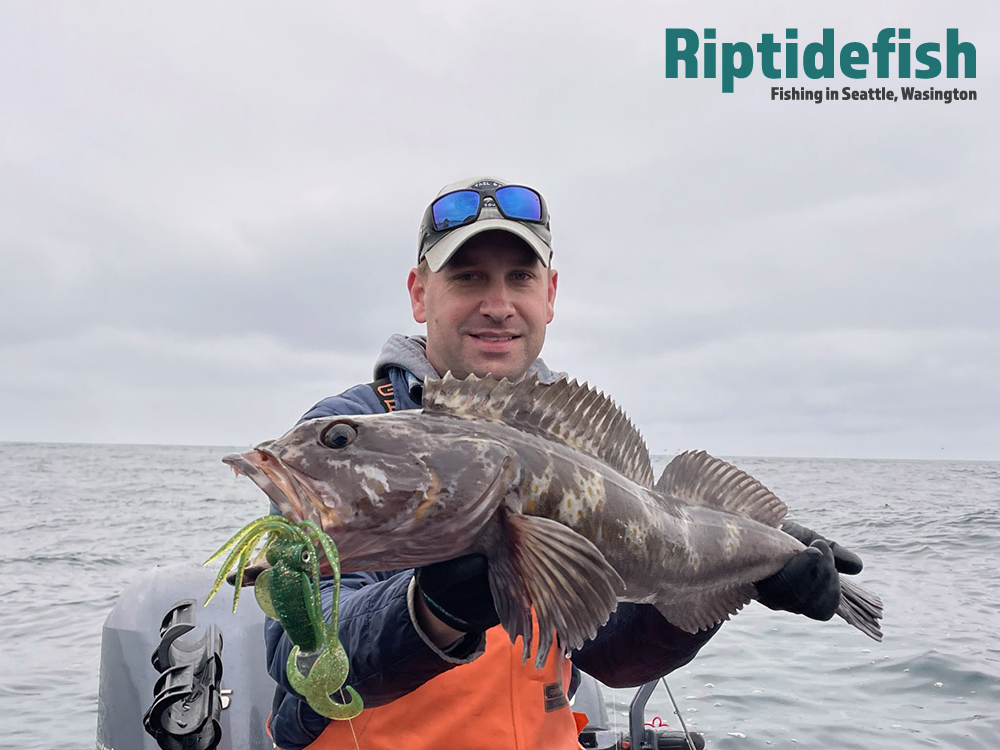
2-Hook Chicken Rigs for Lingcod
A two-hook chicken rig can be a great way to work the reef and have an equal shot at catching Lingcod and Rockfish. P-Line Lingcod Rigs are pre-rigged and ready to attach a cannonball sinker on the lower swivel and send it down to the reef.
How to Catch Lingcod with Bait
When Lingcod are hungry, and they always seem to be hungry… drifting dead bait can be a great way to catch them. First, identify the area where you want to fish and position your boat up-current so that you drift over it. We often set up our drift and find that we aren’t drifting in the exact direction we want, and have to reposition. In Washington and Alaska where I have most of my Lingcod fishing experience, I have found best luck with herring (if I am fishing with dead bait). At times the largest herring you can find is best, at other times matching your bait to the size of the forage fish they are feeding on and going smaller works better. We have had days in the ocean where anchovies caught more fish than herring or artificial lures.
Fishing for Lingcod with Live Bait
In my mind, there is no imitation that works as well as the real thing, and live bait has consistently been my top producer. Here in Washington, the Sand Dab (call it a flounder if you must!) is the most easy to find and catch, and it works really darned well. Greenling is another effective live bait fish to use for Lingcod, and whether we catch one on purpose or accidentally, it is always saved in the live well.
Be aware that many areas have an “aggregate bottom fish daily limit” which means that you can only have a certain number of bottom fish in total on board (individual species limits are also in play). On the date this article was published, many of Washington’s coastal marine areas had either a 9, 10 or 15 daily limit for bottom fish (which is all the legal lingcod, rockfish, cabezon, greenling, flounder and whatever else is legal to keep total). So be aware that you have to make sure you don’t go over the limit with the fish you keep plus your live bait… because that counts if it is on board! Also be aware that rules change frequently in some areas so keep up on regulations!
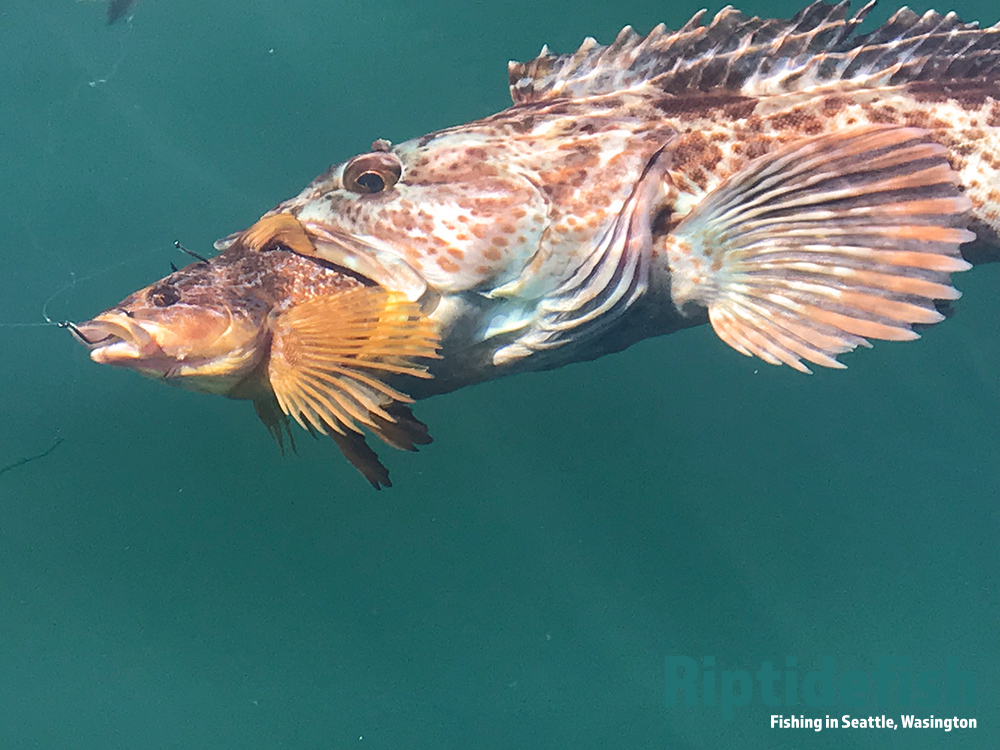
Caring for Live Bait
It is best to have a live well or aerator on the boat, but if you don’t then a bucket or fish hold with seawater will do just fine. We will head out and spend a little time catching our live bait, then head off to the Lingcod grounds where the fun really begins.
Live bait rigging can be as simple or complicated as you make it. A friend of mine runs a charter Washington State and runs a heavy mono slider for the lead sinker, then a short leader with two big 8/0 Gamakatsu octopus hooks for the bait. He knows what he’s doing, and I know that you can’t argue with success. But if you are in a pinch, a banana sinker and salmon mooching leader can catch plenty of Lingcod.
When we drift with live bait in protected waters like Puget Sound, I like to place the rod in a rod holder. I drop the bait slowly to the bottom to avoid tangles, crank up a foot or two, and wait. Staying near the bottom is important, so drop down until you feel the bottom “thump” and crank up a little. Check the bottom often.
The Live Bait Grab
When a Lingcod grabs on, it can be a violent or subtle take. There is no rush to grab the rod. THERE IS NO HOOK SET! Walk over, gently take the rod out of the holder, and with a slow and steady retrieve, reel in the Lingcod. This strategy is important because many times the Lingcod will have a death grip on the live bait but may or may not have any hooks in its mouth.
Have the net ready before the Lingcod nears the surface and get the net underneath the Lingcod before it throws the bait. Many Lingcod that are hooked on live bait get spooked and let go as they near the surface if there is frantic movement by the crew.
Puget Sound’s Rockfish populations are in recovery mode from decades of over fishing. One of the benefits of fishing with a live Sand Dab or Greenling is that your only real target is the Lingcod you are targeting. Dead herring or lures will catch Lingcod but also plenty of protected Rockfish that need to be released. Up your odds for Lingcod and decrease your odds for incidental catches by using live bait.
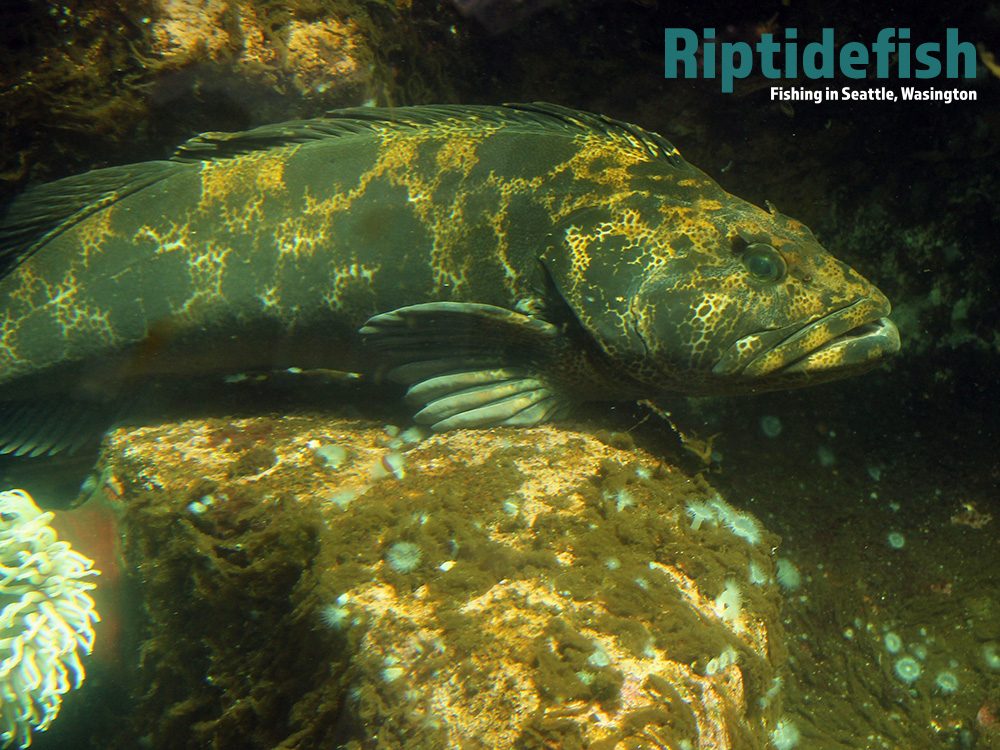
Lingcod Fishing in the Pacific Ocean
Fishing for Lingcod in the offshore realm is hard work most days with long range trips, fishing as deep as 500′ with heavy equipment, your body battling the ocean swells, but the payoff can be huge. When the weather permits us to get offshore, and we know where to go, limits of large Lingcod can happen with regularity.
I’ve been told that it’s a big ocean. Every Pacific Coast port seems to have access to an endless number of places to fish for Lingcod, and even those that have a large fishing fleet still can offer great fishing for the entire season. It is amazing to me that the top charter boats in Westport, La Push and Neah Bay share world-class reports all season long even though there is massive fishing pressure in the area.
Deep Sea Lingcod Fishing
Deep water Lingcod fishing areas usually produce great catches, and many of the largest Lingcod each season are caught from these offshore grounds. Finding them can be a task, since there is alot of real estate out in the Pacific and the GPS coordinates for the best spots can be closely guarded. Many of the Halibut fishing spots off the Washington Coast offer a mixed bag that include Lingcod.
During Halibut season we catch our fair share of Lingcod using our Halibut fishing setups like salmon bellies and big plastic squid lures. But if we are targeting Lingcod, a copper pipe jig or Norwegian cod jig are our favorites.
Lingcod Fishing Nearshore Areas
Washington state is my home. And when Lingcod season comes around the majority of my fishing takes place in nearshore areas. We currently have depth restrictions for bottom fish in most areas, most of the year. In Puget Sound it’s 120 feet. Light tackle fishing for Lingcod makes for a great experience.
Impressive rock outcroppings, shear cliffs and jetties around the Pacific Coast offer us a chance to cast lures into structure and catch Lingcod. It’s thrilling to nose your boat to within a dozen yards from a rocky pinnacle and drop down your gear. When getting close to any structure, you have to be cautious and aware of your drift.
Lingcod Fishing from Shore
Lingcod fishing is for everyone, even if you don’t own a boat. Shore anglers do very well fishing the Pacific Coast’s many jetties, piers and rocky shorelines. Although these aren’t truly a surf fish, they are caught purposefully and incidentally by thousands of shore anglers from California to Alaska.
My favorite childhood place to fish was the Barview Jetty at Tillamook Bay, Oregon. I will always remember the excitement of fishing off the rocks and never knowing what the next kind of fish we would catch. Any Lingcod we caught gave us a thrill. But the bigger ones also gave us a challenge of how to land such a cunning fish without any sort of net.
Lingcod Fishing Gear & Tackle
This isn’t a Largemouth Bass tournament and you don’t need a dozen different rods in any single Lingcod fishery. Educate yourself on the best setup for the area you intend to fish and keep it simple!
Deep Sea Lingcod Fishing Equipment
Deep sea Lingcod fishing, in my mind, is any time fishing deeper than 200 feet. The gear is usually heavy, as most of the Lingcod fishing is done when there is an open Halibut season. A shorter rod seems to be easiest to use when trying to jig heavy gear. I like a 5’6″ to 6″ one piece rod, line rating somewhere near 80-200 pound test. Pair with a quality reel that can hold at least 300 yards of 65 to 80 pound braided spectra like P-Line XTCB Braid.
Nearshore Lingcod Fishing Equipment
You can keep things fairly simple, but if I am vertical jigging my setup is a little different than my live bait setup.
Vertical Jigging Setup
A fast-action rod that can handle jigging 3 ounces to 10 ounces. I suggest 6′ to 8′ spinning or casting rod, your preference. For mainline, P-Line XTCB Braid 40 to 50 pound test. For leader, 30 to 50 pound mono or fluorocarbon.
Live Bait Setup
I like a longer rod for Lingcod fishing with bait. Regardless of whether you are dragging a dead herring, or found some lively Greenling or Flounder for the live-well, 9′ to 10’6″ casting rod with a good bend but enough backbone to leverage a big Lingcod out of the safety of the reef. For mainline, P-Line XTCB Braid 40 to 65 pound test. For leader, 30 to 50 pound mono or fluorocarbon.
Lingcod Equipment for the Shore Angler
Your equipment for shore, pier or jetty fishing is going to be dictated by the distance you need to cast, the weight of the lure you are casting and the difficulty of bringing a nice Lingcod to shore. I like a 8’6″ to 10’6″ stout rod ready to cast up to 4 ounces. As you get out and explore the coast, you will be able to better determine whether a rod on the lighter end or heavier end of the spectrum is what best serves you. Spinning or casting, your preference. Shore fishing will most likely mean your mainline will be more exposed to sharp rocks, so a very durable monofilament line is best, like P-Line CXX Premium in 15 pound to 30 pound.
Protect Rockfish with a Decending Device
Rockfish are a common bycatch. Some species can’t handle the pressure change from being reeled up to the surface. The smart guys call this Barotrauma. In Washington state, it is required to use a decending device to release any Rockfish you catch. The device allows us to return the fish to the depths they were caught at and it reduces mortality. In areas outside Washington state, even if it is not required, using a decending device is the right thing to do. For more information check out this link on using decending devices.
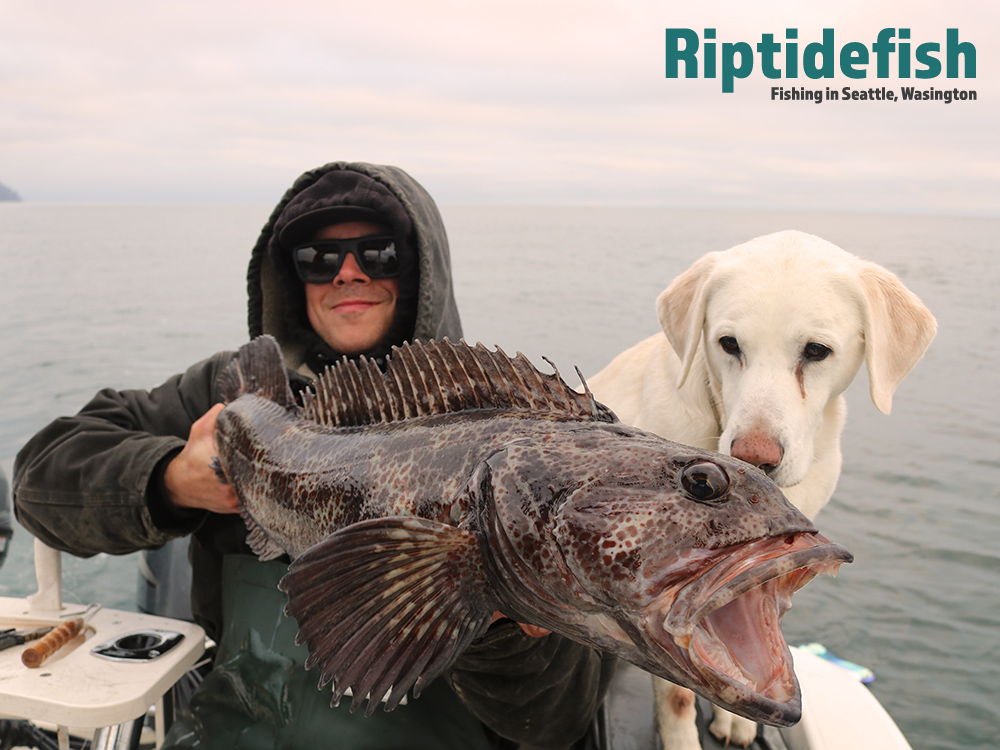
Lingcod Fishing Resources
Riptidefish Lingcod Articles
Washington Department of Fish & Wildlife Lingcod Page
Oregon Department of Fish & Wildlife Saltwater Fishing Page
California Department of Fish & Wildlife Current Ocean Fishing Regulations
Fisheries and Oceans Canada
Alaska Department of Fish and Game Lingcod
Final Lingcod Fishing Thoughts
I absolutely love fishing for Lingcod. And have explored much of Washington and some of Alaska, British Columbia and Oregon in search of them. There are so many unique experiences you will have on the hunt for Lingcod. This article is my attempt to share what I know, and I admit that I don’t know everything. The most important tip I can share, is to be safe and have fun with it!


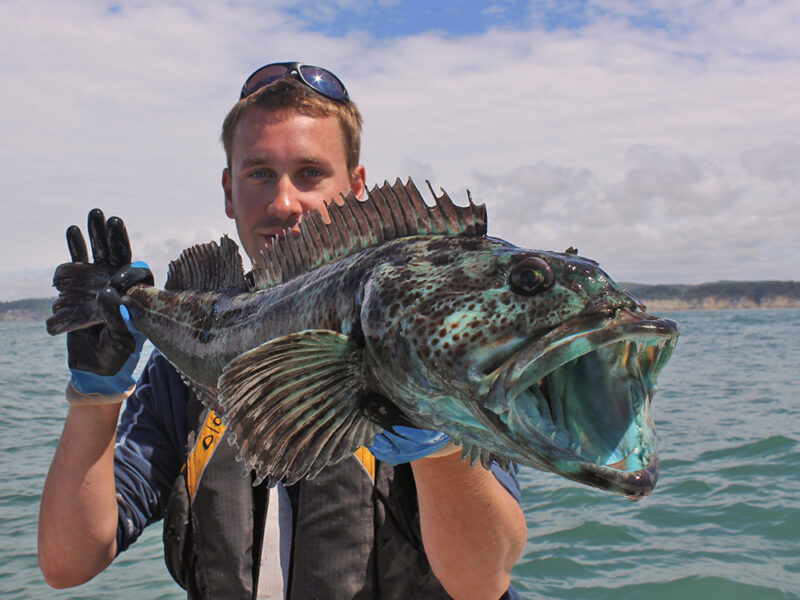
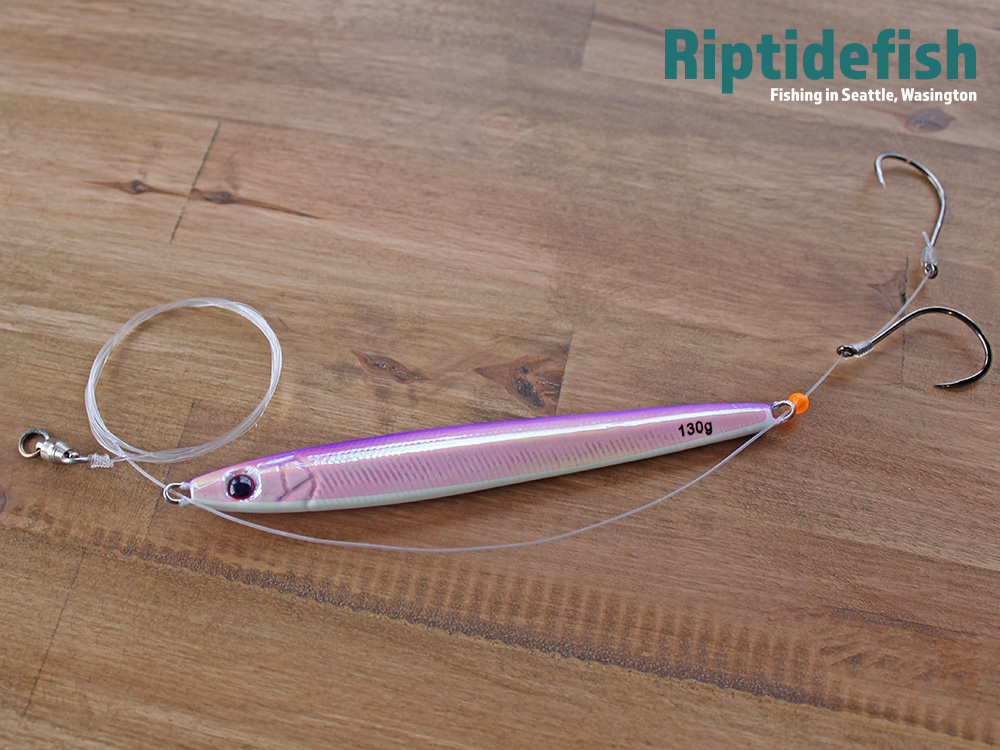






 Dungeness Crab in Westport Washington
Dungeness Crab in Westport Washington
